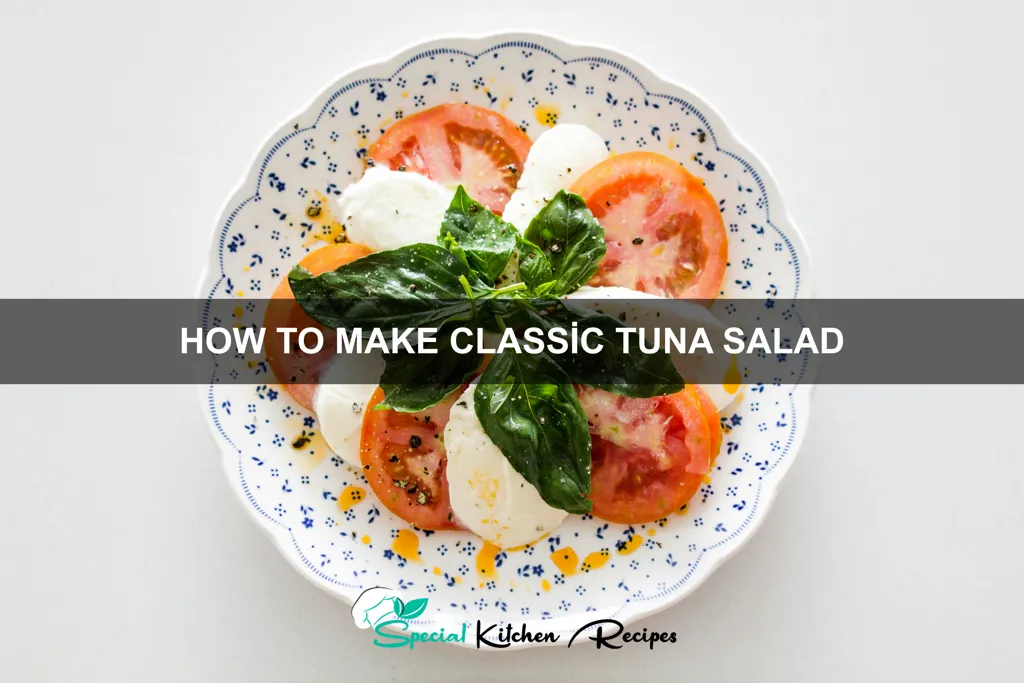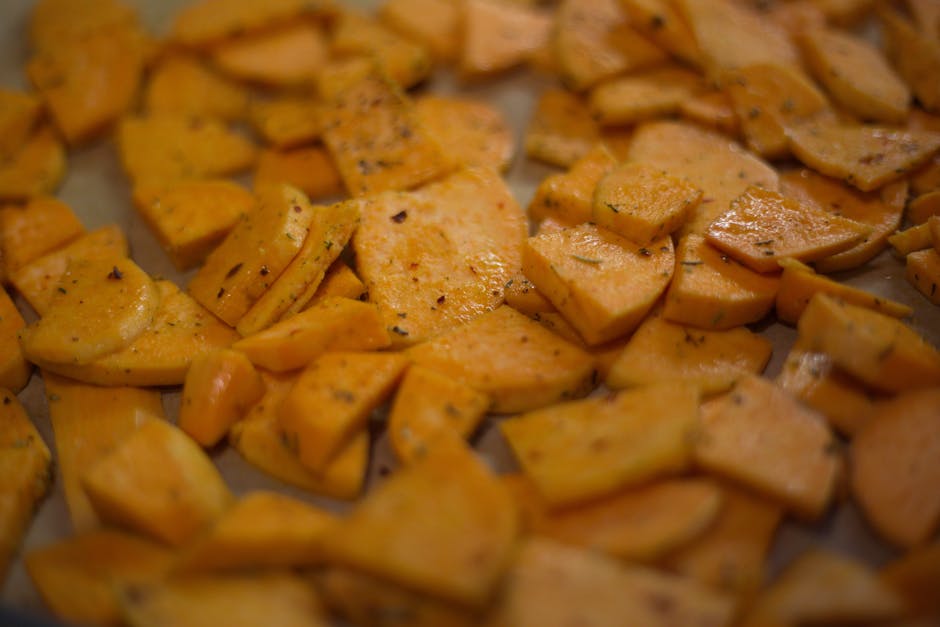The humble tuna salad sandwich: a seemingly simple pleasure, yet its history is surprisingly rich and multifaceted. While pinpointing the exact origin is difficult, its rise to popularity is inextricably linked to the canning industry’s advancements in the late 19th and early 20th centuries. Before readily available canned tuna, the preparation of this dish would have been far less common, limited to those with access to freshly caught, high-quality tuna. The development of efficient canning methods made tuna a readily accessible and affordable protein source, fundamentally changing diets globally.
The United States played a significant role in popularizing tuna salad. The burgeoning fishing industry off the California coast, coupled with innovative canning techniques, made tuna a staple in American households. By the mid-20th century, tuna salad had cemented its place in American cuisine, appearing in lunchboxes, on picnic tables, and as a sophisticated (yet quick) dinner option. In fact, Americans consume an estimated 1 billion pounds of canned tuna annually, highlighting its enduring appeal and widespread consumption. This figure underscores tuna’s economic importance and its significant contribution to the food industry.
Beyond the United States, tuna salad’s cultural impact varies. While it might not hold the same iconic status in every nation, tuna, in various forms, is a globally significant protein source. Different cultures incorporate tuna into their cuisine in diverse ways, from sushi and ceviche to pasta dishes and salads. However, the simple, mayonnaise-based tuna salad, as we commonly know it, remains distinctly tied to Western culinary traditions, particularly in North America and Europe. Its adaptability is a key to its longevity; it can be easily customized with various additions like celery, onion, pickles, or hard-boiled eggs, making it a versatile and endlessly customizable dish.
Ingredients and Measurements
Creating the perfect classic tuna salad hinges on using high-quality ingredients and precise measurements. The following list details everything you’ll need, with specific quantities designed for two generous servings. Feel free to adjust proportionally for larger batches.
Tuna: We recommend using two 5-ounce cans of tuna packed in water. Tuna packed in oil will result in a richer, fattier salad, but the water-packed version offers a cleaner, lighter flavor profile. Make sure to drain the tuna thoroughly before adding it to the bowl. This step is crucial for preventing an overly watery salad. Thoroughly draining the tuna is key to achieving the perfect consistency.
Mayonnaise: The foundation of any good tuna salad is the mayonnaise. We suggest using 1/4 cup of high-quality mayonnaise. The brand you choose will impact the flavor, so experiment to find your favorite. Don’t be tempted to skimp on the mayo! It’s what binds the ingredients together and provides the creamy texture. Consider using a full-fat mayonnaise for a richer flavor and better texture; however, a light mayonnaise can be substituted for a lighter option.
Celery: For a classic crunch, add 1/2 cup of finely diced celery. Using a sharp knife, dice the celery into very small pieces for even distribution throughout the salad. Larger pieces of celery can be overpowering, detracting from the overall taste. Avoid using overly stringy celery, as this can negatively impact the texture.
Onion: A small amount of finely minced onion adds a subtle layer of flavor. Use 1 tablespoon of finely minced red onion or 1/2 tablespoon of finely minced white onion. Red onion offers a slightly sharper bite than white onion; choose based on your preference. Overuse of onion can easily overpower the delicate flavor of the tuna.
Relish: For a touch of sweetness and acidity, add 1 tablespoon of sweet pickle relish. This is optional, but it adds a nice counterpoint to the richness of the mayonnaise and tuna. If you prefer a more savory salad, you can omit this ingredient entirely.
Seasoning: Finally, season your tuna salad to perfection. We recommend starting with 1/2 teaspoon of salt and 1/4 teaspoon of freshly ground black pepper. Adjust to taste, adding more salt or pepper as needed. Taste as you go and adjust seasonings to your preference.
Optional additions: Consider adding other ingredients like chopped hard-boiled eggs, capers, or lemon juice for a unique twist on the classic recipe. Remember to adjust the quantities of other ingredients if you add more components to the salad.
Equipment and Utensils
Making a perfect classic tuna salad requires the right tools for efficient and consistent results. While you might already have most of these items in your kitchen, having them readily available will streamline the process. Let’s start with the essentials.
Mixing Bowls: You’ll need at least two mixing bowls. One medium-sized bowl (approximately 8-10 inch diameter) is perfect for mixing the tuna salad itself. A smaller bowl (approximately 6-inch diameter) is ideal for preparing the ingredients separately, such as finely chopping the celery and onion. Using separate bowls prevents cross-contamination of flavors and ensures a cleaner workflow.
Measuring Utensils: Accurate measurements are key to achieving the desired consistency and flavor. A set of measuring cups (1 cup, ½ cup, ¼ cup, and 1 tablespoon) and measuring spoons (1 teaspoon, ½ teaspoon, ¼ teaspoon) are essential for precise additions of mayonnaise, lemon juice, and seasonings. Using a kitchen scale for weighing ingredients like tuna, celery, and onion can provide even greater accuracy, especially when making larger batches.
Cutting Utensils: A sharp chef’s knife (approximately 8-inch blade) is recommended for efficiently chopping the celery and onion. A dull knife will lead to uneven chopping and potentially bruised ingredients. Invest in a good quality knife and keep it sharp for optimal results. A smaller paring knife can also be helpful for more delicate tasks, like removing any skin or stray pieces from the tuna.
Fork or Whisk: A sturdy fork or a whisk is crucial for mixing all the ingredients together thoroughly. A fork works well for gently incorporating the mayonnaise and seasonings, while a whisk could be used for a lighter, airier texture. Avoid over-mixing, as this can result in a mushy tuna salad.
Serving Utensils: Once your tuna salad is ready, you’ll need a spatula or serving spoon to transfer it to your desired serving dish. A small bowl or individual serving containers are perfect for portioning the salad. If serving it on bread or crackers, consider having a butter knife handy for spreading.
Optional Equipment: While not strictly necessary, a food processor can be used to finely chop the celery and onion quickly. However, hand-chopping allows for greater control over the texture and size of the ingredients. Similarly, a colander can be helpful for draining any excess liquid from canned tuna.
Preparation of Tuna (Draining and Flaking)
This section details the crucial step of preparing your tuna before incorporating it into your classic tuna salad. Proper draining and flaking are essential for achieving the perfect texture and preventing a watery, unpleasant final product. We’ll be working with one 5-ounce can of tuna in water or oil, but you can easily scale this recipe up or down based on your needs.
Begin by opening your can of tuna carefully. Use a can opener designed to avoid sharp edges. Once opened, gently tilt the can and allow the tuna to drain over a colander or fine-mesh sieve for at least 2 minutes. This initial draining removes excess liquid, preventing a soggy salad. Don’t rush this step; thorough draining is key to success.
If using tuna packed in oil, take extra care during draining. The oil adds richness, but too much will make the salad heavy. You can use a clean spoon to gently scoop out the tuna, leaving as much oil behind as possible in the can. Alternatively, you can carefully transfer the tuna to a paper towel-lined plate and allow it to absorb excess oil for a few minutes before proceeding.
Now, it’s time to flake the tuna. Using a fork, gently break apart the tuna into smaller, irregular flakes. Avoid over-working the tuna, as this can result in a mushy texture. The goal is to create a mix of larger and smaller pieces for a pleasant mouthfeel. Resist the urge to mash or pulverize the tuna; it should retain some structural integrity.
For a more refined texture, you can consider using two forks to gently flake the tuna. Hold one fork steady while using the other to separate the tuna into smaller pieces. This method provides more control and helps create more consistent flake sizes. Once you’ve achieved the desired consistency, set the flaked tuna aside and prepare the remaining ingredients for your classic tuna salad.
Remember to always check the tuna for any bones. While rare, tiny bone fragments can sometimes remain. Careful inspection before adding the tuna to your salad will prevent any unpleasant surprises.
Properly drained and flaked tuna is the foundation of a great tuna salad. By following these steps, you’ll ensure a delicious and well-textured final product.
Preparing the Vegetables (Chopping and Washing)
The success of a great tuna salad hinges not just on the quality of the tuna, but also on the crispness and freshness of the vegetables. Proper preparation is key to achieving the perfect texture and taste. For this classic recipe, we’ll be using celery and red onion, but feel free to experiment with other additions like bell peppers or cucumbers.
Begin by thoroughly washing all your vegetables. Rinsing under cold, running water is crucial to remove any dirt, pesticides, or bacteria. For celery, carefully inspect each stalk, removing any bruised or discolored sections. Use a sharp knife to trim the ends of the celery stalks.
Next, we’ll prepare the red onion. Red onions possess a strong flavor, so controlling the amount and how finely it’s chopped significantly impacts the overall taste of the salad. We’ll use approximately ¼ cup finely diced red onion for this recipe (about ½ a medium-sized red onion). To minimize the strong, pungent flavor, you can soak the diced red onion in cold water for about 10-15 minutes after chopping. This helps to leach out some of the harsh compounds.
Now, let’s chop the celery. We’ll need about ½ cup of finely diced celery (approximately 2 large stalks). The consistency of your chop is important. Too coarsely chopped celery will create an unpleasant texture, while over-chopping results in a mushy salad. Aim for uniformly sized, small pieces. A sharp knife is essential for achieving clean cuts and preventing bruising, which can lead to a less appealing appearance and slightly bitter taste.
Once both the celery and red onion are chopped, gently pat them dry with paper towels. Removing excess moisture is vital. Excess water will dilute the flavor of the tuna salad and make it watery. This step is often overlooked but significantly impacts the final product’s quality.
Finally, before combining the vegetables with the tuna, arrange them on a separate plate or bowl. This allows for easy access and prevents accidental mixing with other ingredients before you’re ready. Proper preparation of your vegetables, from washing to chopping, ensures a superior tasting and texturally pleasing tuna salad.
Mixing the Salad (Incorporating all ingredients)
Once you’ve prepared all your ingredients – the perfectly flaked tuna, the finely chopped celery and onion, and the other components – it’s time to gently combine them to create your classic tuna salad. The key here is to avoid overmixing, which can result in a mushy, unappealing texture. We’ll be aiming for a light and fluffy consistency where all the ingredients are evenly distributed but still retain some individual character.
Begin by placing the flaked tuna (approximately 2 1/2 cups, from two 5 ounce cans, drained well) into a medium-sized bowl. Ensure the tuna is thoroughly drained to prevent an overly watery salad. If using fresh tuna, make sure it’s been cooked and cooled completely before adding it to the bowl. Next, add 1/2 cup finely chopped celery and 1/4 cup finely chopped red onion. The finer the chop, the more evenly they’ll be distributed throughout the salad, and the less likely you are to encounter large chunks of either vegetable.
Now, add your mayonnaise. Start with 1/2 cup of mayonnaise. The amount of mayonnaise can be adjusted to your preference – some people like a richer, creamier salad, while others prefer a lighter consistency. Begin by gently folding the mayonnaise into the tuna mixture using a spatula or a large spoon. Avoid vigorous stirring or whisking; a gentle folding motion is best to prevent breaking up the tuna flakes. Use a cutting motion with your spatula to incorporate the mayonnaise evenly.
Next, incorporate the remaining ingredients. Add 1 tablespoon of lemon juice (freshly squeezed is best!), 1/4 teaspoon of salt, and 1/4 teaspoon of black pepper. Again, gently fold these ingredients into the mixture. Taste and adjust seasoning as needed. You may want to add more salt, pepper, or lemon juice depending on your preference. Some recipes also include a touch of Dijon mustard for added zest (about 1 teaspoon); feel free to experiment!
Finally, before serving, gently stir in any optional additions such as chopped hard-boiled eggs (1/2 cup, finely chopped), relish (1 tablespoon), or fresh herbs like dill or chives (1 tablespoon, finely chopped). Again, avoid overmixing. Once you’ve reached your desired consistency and flavor profile, your classic tuna salad is ready to enjoy! Serve it on bread, crackers, lettuce cups, or as a filling for sandwiches.
Remember: The beauty of tuna salad lies in its adaptability. Feel free to experiment with different ingredients and seasonings to create your perfect version. But always prioritize gentle handling to maintain a delightful texture.
Seasoning and Taste Adjustment
Seasoning is crucial for elevating your tuna salad from good to exceptional. The goal is to achieve a balanced flavor profile that complements the tuna’s inherent taste without overpowering it. Start with a base of salt and freshly ground black pepper. I recommend using 1/2 teaspoon of salt and 1/4 teaspoon of freshly ground black pepper for a standard 12-ounce can of tuna. However, always taste and adjust to your preference.
Beyond salt and pepper, consider adding other seasonings to enhance the complexity of your tuna salad. Lemon juice is a classic choice, adding brightness and acidity that cuts through the richness of the mayonnaise. Start with 1 tablespoon and add more to taste, up to 2 tablespoons, depending on your preference and the acidity of your lemons. Dijon mustard adds a tangy kick and a subtle depth of flavor. A 1 teaspoon is a good starting point, but you can increase it to 1.5 teaspoons for a more pronounced mustard flavor.
For those who prefer a hint of sweetness, a touch of celery seed can work wonders. Just 1/4 teaspoon is sufficient to provide a subtle sweetness without being overpowering. Alternatively, a pinch of sugar (approximately 1/8 teaspoon) can also add a subtle sweetness, but use it sparingly to avoid making the salad too sweet. Remember, a little goes a long way.
Taste your tuna salad frequently throughout the seasoning process. Start with small amounts of each seasoning and gradually add more until you achieve your desired flavor profile. The flavors will meld as the salad sits, so allow some time for the seasonings to integrate. If you find the salad is too salty, you can always add a little more mayonnaise or lemon juice to dilute the saltiness. If it’s too bland, add more seasonings gradually until you achieve the perfect balance. Remember, personal preference is key. Don’t be afraid to experiment with different combinations of seasonings to find your ideal tuna salad recipe.
Professional Tip: Always taste your tuna salad at room temperature. Cold temperatures can mask some flavors, leading to inaccurate seasoning. Allow the salad to sit for at least 15 minutes before making final taste adjustments.
Recommendations
For the best classic tuna salad experience, we highly recommend using high-quality ingredients. Fresh, sushi-grade tuna will significantly elevate the flavor profile. Opt for mayonnaise with a good balance of tang and richness. Don’t be afraid to experiment with different types of mayonnaise, such as those infused with herbs or spices, to add a unique twist. Freshly cracked black pepper always adds a nice kick. Finally, adjust the seasoning to your preference; some may prefer a more pronounced lemon flavor, while others might favor a stronger celery taste.
Serving Suggestions: This classic tuna salad is incredibly versatile. Enjoy it on crusty bread, toasted croissants, or crackers. It also makes a delightful filling for lettuce wraps, a simple yet elegant open-faced sandwich, or stuffed tomatoes. Consider using it as a spread for celery sticks or cucumber slices for a refreshing appetizer. For a more substantial meal, serve it over a bed of mixed greens with a light vinaigrette.
Storage: Properly stored, your tuna salad can last for 3-4 days in the refrigerator. Ensure it’s stored in an airtight container to maintain freshness and prevent unwanted odors from mixing with other foods. Always use a clean utensil to avoid cross-contamination. Avoid leaving the tuna salad at room temperature for extended periods, as this can lead to bacterial growth.
Complementary Dishes: This tuna salad pairs excellently with a variety of sides. A simple green salad with a light vinaigrette provides a refreshing counterpoint to the richness of the tuna salad. Potato chips or potato salad are also classic pairings. For a more sophisticated touch, consider serving it alongside a side of roasted vegetables or a fresh fruit salad. A light soup, such as tomato soup or a chilled cucumber soup, would also complement the tuna salad nicely.
Nutritional Information (per serving, approximate): The calorie and nutritional content will vary depending on the specific ingredients and quantities used. However, a typical serving of classic tuna salad (approximately ½ cup) may contain around 250-350 calories. It’s a good source of protein and healthy fats, but it’s also relatively high in sodium and saturated fat due to the mayonnaise. For a healthier version, consider reducing the amount of mayonnaise and adding more vegetables like chopped bell peppers or onions. Always consult a nutrition calculator for a more precise analysis based on your specific recipe.





